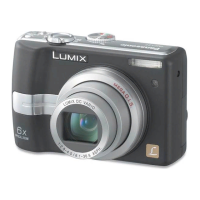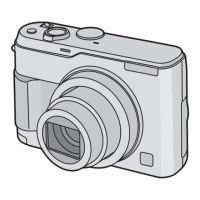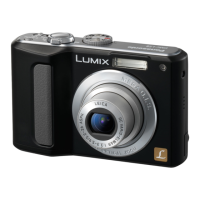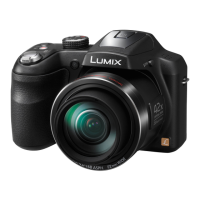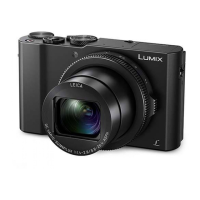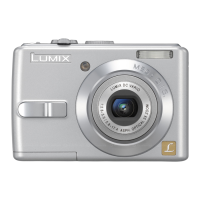Advanced
41
VQT0U87
• The available flash range is an
approximation.
• Refer to P63 for the ISO sensitivity.
• Refer to P25 for the focus range.
• If ISO sensitivity is set to [AUTO] when
using the flash, it will be automatically
increased to a maximum of [ISO400].
• To avoid noise, we recommend
decreasing the ISO sensitivity (P63) or
setting [PICT.ADJ.] to [NATURAL]. (P68)
∫ Shutter speed for each flash setting
¢3 The shutter speed changes depending
on the slow shutter setting. (P67)
• There may be differences in the above
shutter speeds in scene mode.
– [NIGHT SCENERY] (P51):
8 to 1/2000th
– [FIREWORKS] (P53):
1/4th, 1 second
– [STARRY SKY] (P53):
15 seconds, 30 seconds, 60 seconds
• Do not look directly at the flash at
close range when it is activated.
• If you bring the flash too close to an
object, the object may be distorted or
discolored by the heat or lighting from
the flash.
• Do not cover the photo flash with your
fingers or other objects.
• While the flash is charged, the screen
turns off and you cannot take pictures.
The status indicator lights. [Except
when using the AC adaptor (DMW-AC6;
optional).]
If the remaining battery power is low,
the screen may be turned off for a
longer period of time.
• If you press the shutter button halfway
when the flash is activated, the flash icon
turns red.
• When the jitter alert appears, we
recommend using a tripod.
• When you take a picture beyond the
available flash range, the exposure may
not be adjusted properly and the picture
may become bright or dark.
• When taking a picture with the flash, the
white balance is automatically adjusted
[except for [ ] (Daylight)]. However, the
white balance may not be properly
adjusted if the flash level is insufficient.
(P62)
• When the shutter speed is fast, the flash
effect may not be sufficient.
• If you repeat taking a picture, it may not
actually be taken even if the flash is
activated. Take a picture after the access
indication disappears.
• The red-eye reduction effect differs
between people. Also, if the subject was
far away from the camera or was not
looking at the first flash, the effect may not
be evident.
• When you set burst mode or auto bracket,
only 1 picture is recorded for every flash
activated.
Flash setting
Shutter speed
(Sec.)
:AUTO 1/30 to 1/2000
:AUTO/
Red-eye reduction
1/30 to 1/2000
: Forced ON
: Forced ON/
Red-eye reduction
1/30 to 1/2000
: Slow sync./
Red-eye reduction
1/8
¢3
to 1/2000
: Forced OFF 1/8
¢3
to 1/2000
VQT0U87ENG.book 41 ページ 2005年12月27日 火曜日 午後7時12分
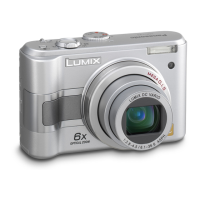
